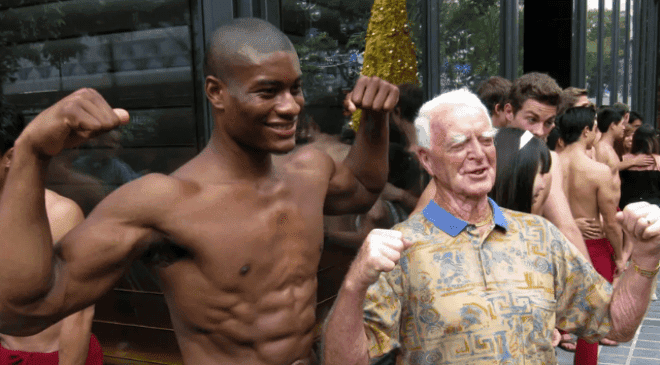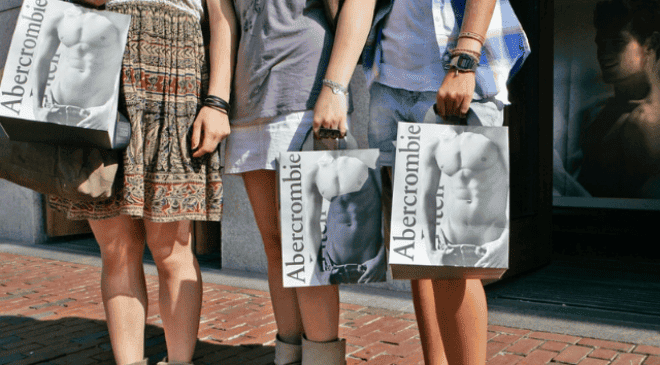Alison Klayman directs White Hot: The Rise & Fall of Abercrombie & Fitch, an upcoming American documentary film for Netflix.
Release Date of the Rise and Fall of Abercrombie
During the late 1990s and early 2000s, Abercrombie & Fitch saw great success and controversy. On April 19, 2022, it is set to be launched.
Trailer for the Film
The official trailer of the Rise and Fall of Abercrombie is as follows
Storyline
Many people went to the mall in the late 1990s and early 2000s by going through Abercrombie & Fitch. Shirtless jocks stood guard at the entrances of shops, promoting a sensual mix of wholesomeness and pleasure.
Many young people came to see the brand because of its strong smell and pulsing dance music.
With the help of CEO Mike Jeffries, A&F made its clothes the must-haves of the new century. Nonetheless, when the truth about marketing restrictions and discriminatory hiring practices came to light, the hot brand turned out to be a bad one.
WHITE HOT: THE RISE AND FALL OF ABERCROMBIE AND FITCH have interviews with people who used to work for them, as well as executives and models.
Read Also:-
Netflix Series Selling Sunset Season 5: Release Date, Cast, Plot, and Where to Watch?
Better Call Saul Season 6: Trailer | What Fans Can Anticipate From the Series?
The Shield Season 2 | Release Date | Cast | Summary | Is the Shield Based on True Events?
Review: How Youth Fashion Became Fascist in ‘white Hot: The Rise and Fall of Abercrombie & Fitch’
All fashion tells a story about the person who is wearing it. During the 1990s and 2000s, people who went to Abercrombie & Fitch learned a very important thing.
On the surface, it looked like it matched the mood of the country at the time. When “White Hot: The Rise and Fall of Abercrombie & Fitch” is shown, the story gets even worse. Even though the models used to market it were beautiful, the story gets even worse as the documentary unfolds (which drops on April 19 on Netflix).
For more than a century, Abercrombie & Fitch has been making clothes for people. WASPs were a big part of Ralph Lauren and Tommy Hilfiger’s designs, and Calvin Klein’s monochrome eroticism was a big part of Mike Jeffries’ revival of the brand back then.
The models were mostly men, shirtless, and ripped, just like Michelangelo’s David and Jersey Shore.

The rugby shirts and finicky ripped jeans were unremarkable but reasonably priced. A&F emblems scattered over sweatshirts and T-shirts, signifying that you, too, were a member of the ruling class of teenage cool.
The company was upfront about its insider/outsider attitude, but the problem wasn’t the clothing. The company’s hiring practices and advertising style were overtly prejudiced.
Abercrombie & Fitch
Abercrombie & Fitch was promoting neocolonial jock style with a dash of white bigotry. Like the models, the retail salespeople had to conform to an “all-American” ideal that featured discriminating whiteness. “We’re white,” said an Abercrombie sign. It implied no one else cared.
Abercrombie & Fitch’s legacy is not one of overpriced graphic tees, but of discrimination and corporate corruption, as explored in “White Hot: The Rise and Fall of Abercrombie & Fitch” https://t.co/nntrIeLGyQ
— The Daily Beast (@thedailybeast) March 31, 2022
Alison Klayman, the ace documentarian behind “Jagged,” “The Brink,” and “Take Your Pills,” tells us how Abercrombie & Fitch got to ridiculous levels of fame by taking an already existing strain of sexy preppy entitlement and boosting it into the aspirational stratosphere.
Following the brand’s incredible trajectory (it was legendary for a decade before bursting into flames), she meets many former workers, including senior executives, who describe how the sausage was made.
A&F salesman sought the hunkiest lads in the hippest fraternity to promote their clothing on college campuses. Closed mall doors concealed dance-club rhythms and A&F perfume clouds within. The quarterly coffee-table catalogs were all about frat boys who looked like rugby and lacrosse jocks.
Olivia Wilde, Taylor Swift, Channing Tatum, Jennifer Lawrence, Ashton Kutcher, and January Jones, among others, appeared in the ads before they were famous.

“They earned so much money selling clothes,” recalls former A&F model Bobby Blanski. But not in their underpants.” “The garment itself was nothing exceptional,” says Alan Karo, an Abercrombie fashion marketing and advertising expert. Label, brand, club, and cult ruled. “Oh my God, they’ve bottled this,” said Moe Tkacik, a journalist. They’ve turned everything I hate about high school into a business.”
A section of the Abercrombie narrative resembles the film business. Hollywood moguls were establishing an onscreen identity that was the polar antithesis of their own — a white-picket-fence America of idealized WASP conformity, according to Neal Gabler’s pioneering book “Empire of Their Own.”
On a karmic level, those Jewish moguls perceived the other realm as a type of dream, raising it to mythology.



Comments are closed.